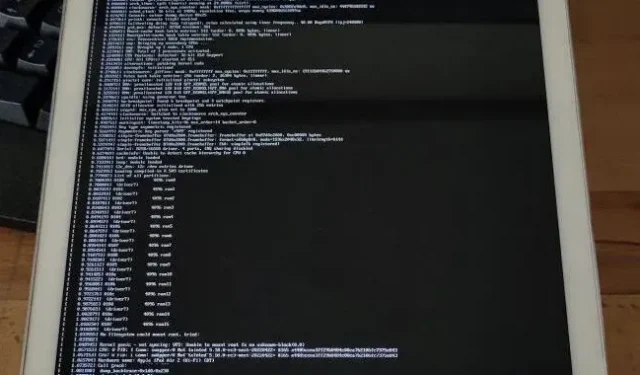Developers run Linux on old iPad Air 2 hardware

If you have a 2013 or 2014 iPad that is not being used because it no longer receives updates from Apple and has stopped running the apps you want, some developers are working on an alternative software solution for you. Developer Konrad Dybcio and Linux enthusiast “quaack723 “have joined forces to boot Linux kernel version 5.18 on an old iPad Air 2, a major achievement for a device that was designed to never run any operating system other than Apple’s..
The project appears to be using an Alpine Linux- based distribution called postmarketOS, a relatively small but rapidly growing distribution aimed primarily at Android devices. Dybcio used the “checkm8″hashtag in their original tweet about the project, implying that they were using the “Checkm8″bootrom exploit, published back in 2019, to access the hardware. For now, developers have Linux running only on some older iPad devices using A7 and A8 based chips, including the iPad Air, iPad Air 2, and several generations of iPad mini. But subsequent tweets imply that Linux will be up and running on any device with an A7 or A8, including the iPhone 5S and the original HomePod.
This is not the only project dedicated to running Linux on Apple hardware. One project, Asahi Linux, was dedicated to reengineering M1 chip support in Apple Macs and shipping patches upstream so they could be integrated into the Linux kernel. Another, Project Sandcastle, has an Android build installed and running on an iPhone 7. Apps like iSH will give you a Linux shell that runs on top of iOS or iPadOS. circumstances.
Development of this latest release of Linux-on-iDevices is still in its infancy. The photos shared by the developers show a basic boot process that fails because it can’t mount the file system, and Dybcio notes that basic things like USB and Bluetooth support don’t work. Getting network, audio, and graphics acceleration to work properly will also be a challenge. But the ability to boot Linux might attract the attention of other developers willing to help the project.
Compared to today’s hardware with Apple’s M1 chip, A7 and A8 based devices won’t do well as general purpose Linux machines. While their CPUs and GPUs were impressive at the time, they are significantly slower than current Apple devices, and they all came with 1 or 2GB of RAM. But their performance still pairs well with the slow processors in devices like the Raspberry Pi 4, and most (though not all) A7 and A8 hardware have stopped receiving Apple’s new iOS and iPadOS updates for the time being; Linux support could give some of these devices a second life as retro game consoles, simple home servers, or other things that low-powered Arm hardware is good for.
Leave a Reply